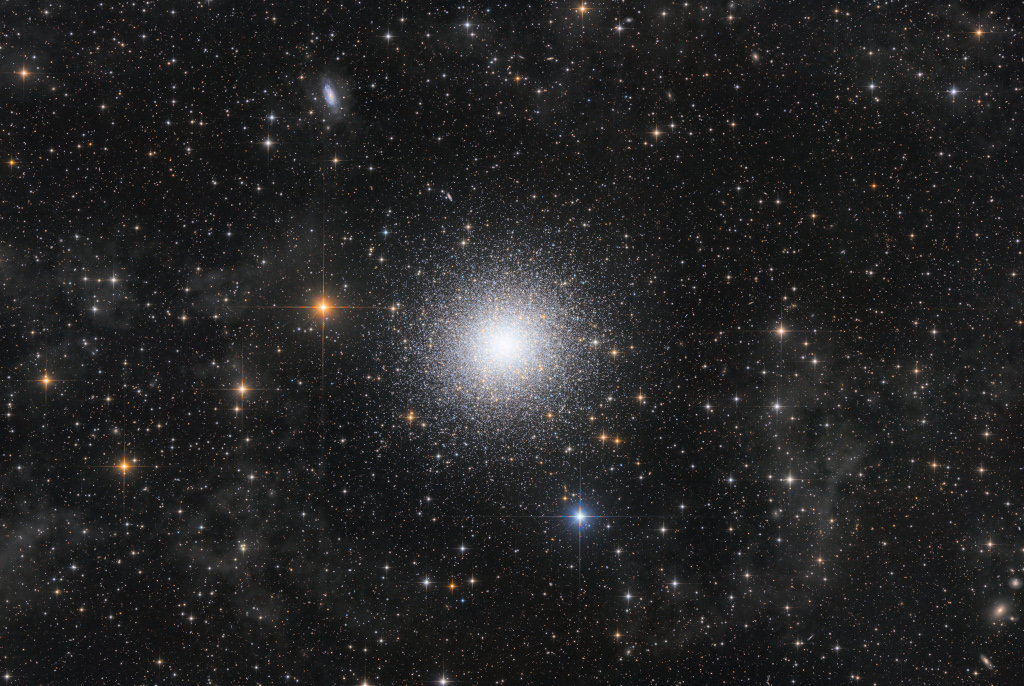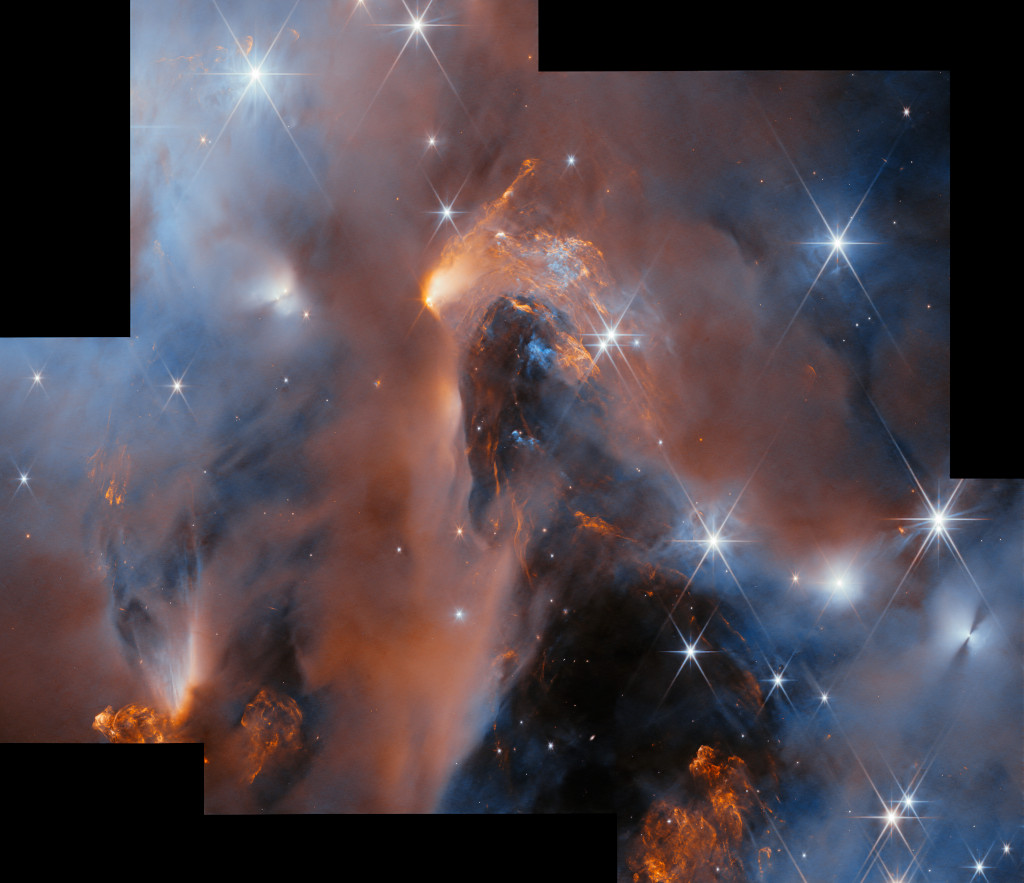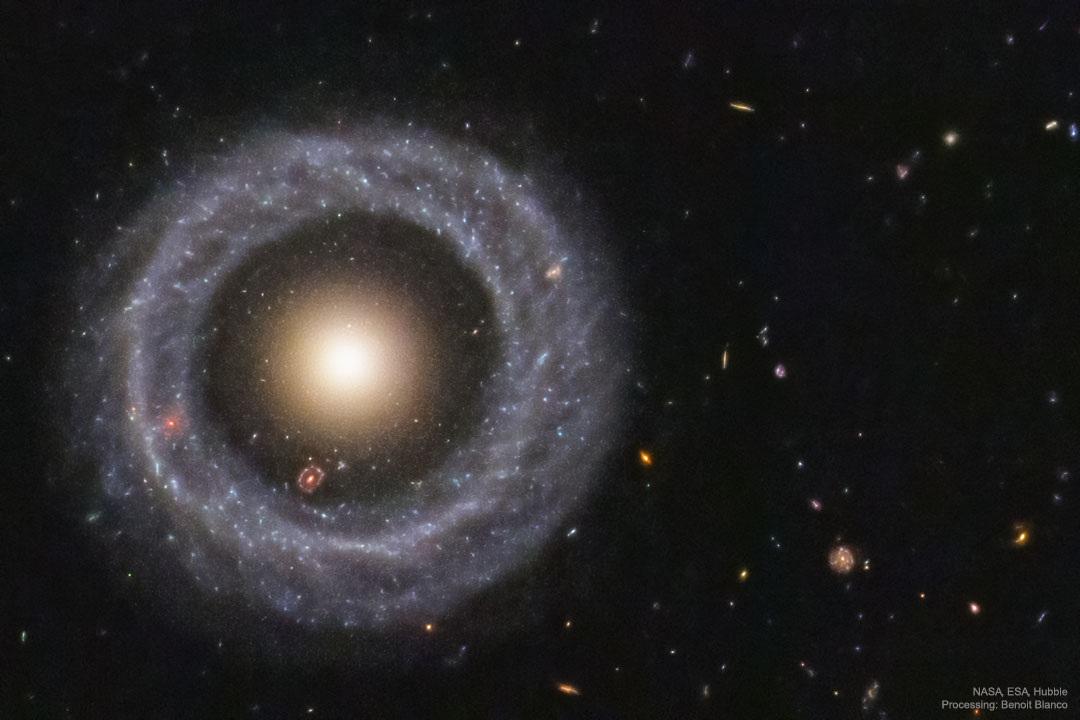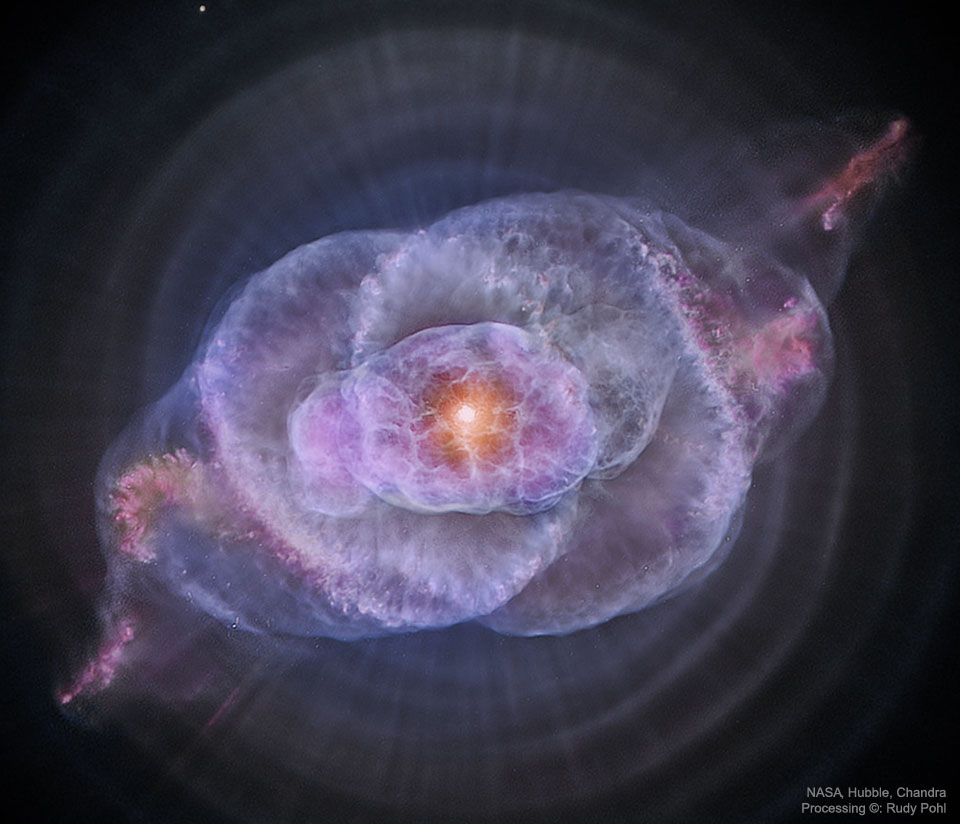
2008年12月29日:矮星系NGC 1569内的星爆现象-(NGC 1569: Starburst in a Dwarf Irregular Galaxy)--原图下载
Credit: NASA,ESA,Hubble Heritage(STScI/AURA); Acknowledgement: A. Aloisi (STScI/ESA) et al.
说明: 宏伟的螺旋星系通常是天之娇子,得意扬扬地展示它们对称漩涡臂上的年轻明亮星团。 不过,小型的不规则星系也会有恒星诞生活动呢。 譬如,上图中的矮星系NGC 1569就正在历经一次大量的恒星形成活动,而且启始的时间可以倒推到二千五百万年前。星爆活动所产生的混乱环境,主要是由许多的超新星爆炸所造成的。这些宇宙级爆炸不但会喷攦物质,也会触发新一波的恒星诞生活动。位在我们螺旋状银河系的两个大型星团,恰好出现在这张哈伯太空望远镜影像的中左方,它们可以视为是球状星团的年轻範例。这张影像涵盖了NGC 1569内部8000光年的区域。距离我们只有一千一百万光年的NGC 1569,是个离我们相当近的星爆星系,因此成为天文学家探索快速演化星系内恒星族群的绝佳目标。 NGC 1569位在具有长长脖子的鹿豹座(Camelopardalis)内。
原文:
Credit: NASA,ESA,Hubble Heritage(STScI/AURA); Acknowledgement: A. Aloisi (STScI/ESA) et al.
Explanation: Grand spiral galaxiesoften seem to get all the glory, flauntingtheir young, bright, blue star clusters in beautiful,symmetric spiral arms.But small, irregular galaxiesform stars too.In fact, as pictured here, dwarf galaxy NGC 1569 is apparently undergoing a burst of star forming activity, thoughtto have begun over 25 million years ago.The resulting turbulent environment isfed by supernova explosions as the cosmic detonations spew out material and trigger further star formation.Two massive star clusters - youthful counterparts toglobularstar clustersin our own spiral Milky Way galaxy - are seen left of center in the gorgeousHubble Space Telescope image.The above picture spans about 8,000 light-years across NGC 1569.A mere 11 million light-years distant,this relatively close starburst galaxy offers astronomers anexcellent opportunityto studystellar populations in rapidly evolving galaxies.NGC 1569 lies in thelong-neckedconstellationCamelopardalis.






评论